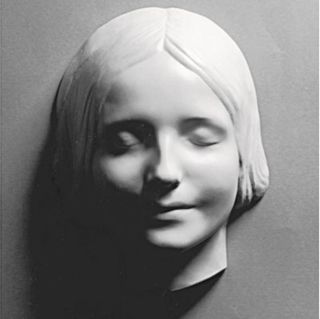For 60 years, medical school college students have practiced CPR on a dummy doll — dubbed Resusci Annie — compressing her chest and respiratory air into her plastic mouth. The face of that dummy, it appears, just isn’t made up. It’s based totally on the face of a teenage girl found ineffective inside the Seine river in Paris inside the late nineteenth century whose physique was on no account acknowledged nonetheless whose visage was captured in a mould, or “demise masks.”
A model new paper inside the Christmas drawback of The BMJ — a selected model of the medical journal which will embody lighthearted or outside-of-the-box evaluation — tells how the nameless corpse turned a CPR manikin and earned the title of “most likely essentially the most kissed girl on the earth.”
“Yearly now we have now to carry out compulsory CPR teaching which makes use of those mannequins,” Dr. Stephanie Loke, co-author of the attribute and a dental trainee at Liverpool School Dental Hospital, in Liverpool, U.Okay., instructed Reside Science in an e mail. She and her co-author Dr. Sarah McKernon, moreover of the faculty’s School of Dentistry, “merely questioned who the face was!” she added.
Related: Lifesaving Beats: Songs Can Help with CPR Teaching
The story of Resusci Annie begins better than a century prior to now, when the ineffective physique of a girl who appeared about 16 was pulled from the Seine, the authors wrote. Because of her physique confirmed no indicators of violence, some people speculated that she had drowned herself intentionally. The physique was positioned on public present in a mortuary in hopes that someone could set up the deceased — a typical observe on the time — nonetheless nobody acknowledged {the teenager}. She turned generally called “L’Inconnue de la Seine (the Unknown Lady of the Seine).”
Though anonymous, she was under no circumstances forgotten. The pathologist who carried out her autopsy was so taken collectively along with her serene expression that he had a model maker create a plaster “demise masks” of her face. The masks was replicated and acquired. In precise reality, the Lorenzi model makers, who, primarily based on the paper authors made the distinctive demise masks, nonetheless promote copies of it proper this second under the title “Noyée [Drowned Woman] of the Seine.”

Inside the late Fifties, when medical school college students have been merely starting to check and observe CPR, Archer Gordon, a member of the American Coronary coronary heart Affiliation”s CPR Committee, realized {{that a}} CPR dummy could save medical school college students from the pointless ache and potential rib harm of coaching CPR on each other. To manufacture such an element, he and a Norwegian colleague sought the help of Norwegian toymaker Åsmund Laerdal.
It turned out, Laerdal had seen a duplicate of “L’Inconnue de la Seine” on the wall of a relative’s house, and he decided to supply the CPR manikin the similar face. Thus, in 1960, when the Laerdal agency constructed the first CPR manikins, “L’Inconnue de la Seine” turned “Resusci Annie,” the CPR dummy, or Resusci Anne, as Laerdal refers again to the doll on its website online. Sooner than making CPR manikins, Laerdal had manufactured a doll named Anne. “Possibly, that’s the establish that caught,” Loke acknowledged.
The doll, product of soppy plastic, had a collapsible chest so that school college students could observe chest compressions and open lips so that they might observe mouth-to-mouth resuscitation.
Making the CPR manikin modified the course of the Laerdal agency from toys to medical devices, as a result of it describes on its website onlinethe place Resusci Anne continues to be accessible for purchase. The company estimates that 300 million people across the globe have been expert in CPR, most of them with the help of Resusci Anne. A form of people, it seems, was Michael Jackson, who included the refrain “Annie are you okay?” inside the music “Straightforward Authorized” after he was impressed by his private CPR teaching, primarily based on the BMJ paper. (This line will also be utilized in CPR teaching when trainees check for a response inside the affected particular person.)
Nonetheless what regarding the ethics of developing reproductions of a deceased particular person’s face and selling them with out consent? In an editorial printed within the similar drawback of BMJ, creator and ethicist Julian Sheather notes that although inserting our our bodies on present and passing spherical demise masks have been widespread practices inside the nineteenth century when “L’Inconnue de la Seine” died, these practices might be “ethically troubling” proper this second.
“Few people would want an image of a ineffective cherished one broadly circulated with out consent,” Sheather wrote. Inside the editorial, Sheather seeks a middle flooring between judging the earlier by present-day necessities and suspending judgment of historic previous altogether. “Whereas I possibly wouldn”t search to remove the manikins in circulation, if making them now I is prone to be tempted, out of respect, to anonymize her face,” he wrote.
Initially printed on Reside Science.
